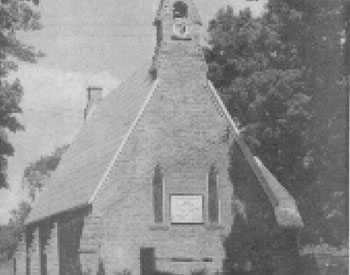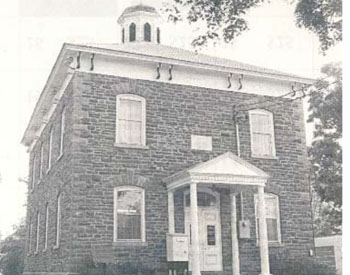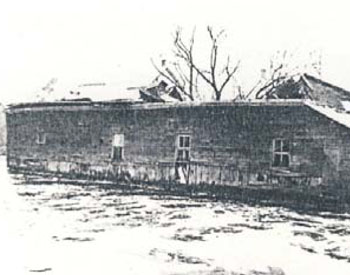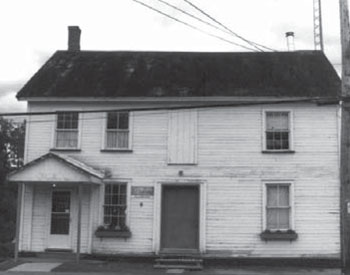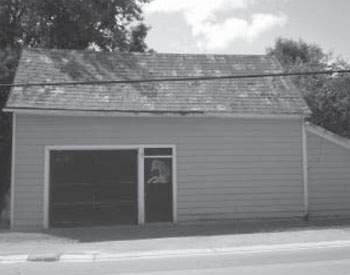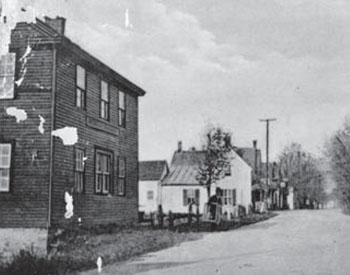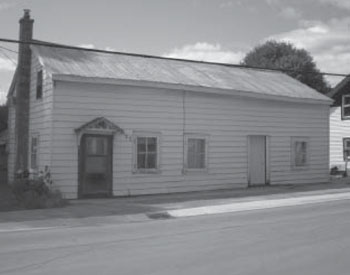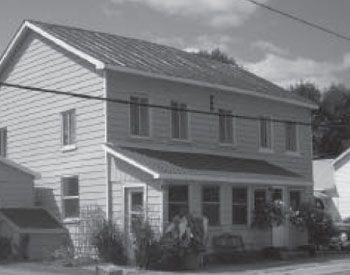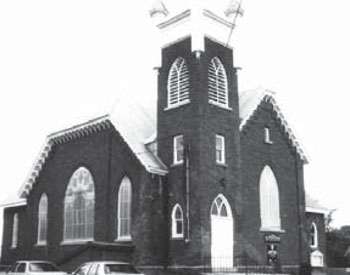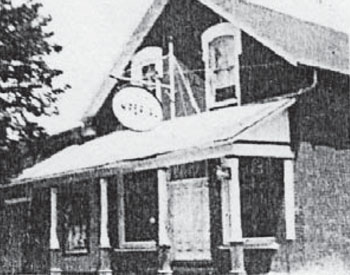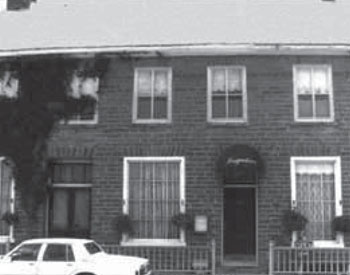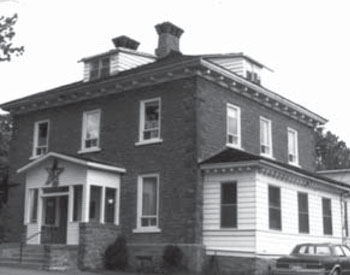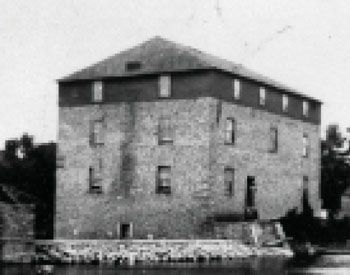Archibald Magee was an early arrival in Oxford Mills, and carried on a number of different professions. He was Innkeeper, the Coroner, a shopkeeper and Tavern owner. Magee opened a tavern in a building across the street (See No. 13) in 1855, and the following year built a large wooden structure here at No. 13 which served as a hotel and local meeting place for many years. The Township Council met here between 1857 and 1875, when the new Town hall was built, and the local Anglican congregation met here until their church was erected in 1869. In 1900, Ormand Barnard bought the property and used it as his workshop, and it was here he invented his curd cutting machine, patented in 1907. Charles Beckett bought the building as a residence in 1934 and ran the Post Office from here. However, in November, 1939 it burned to the ground. It was never rebuilt.
